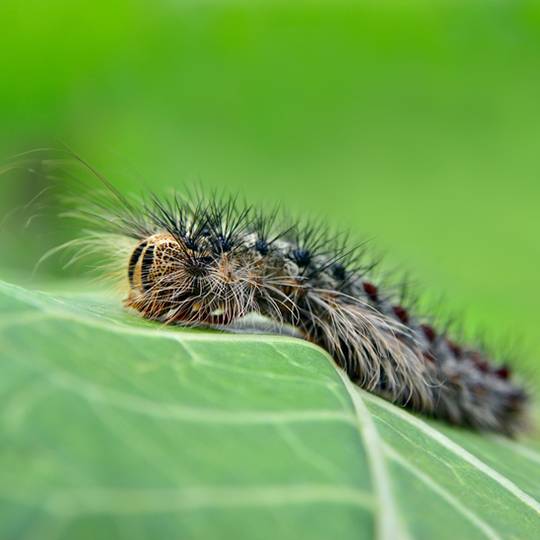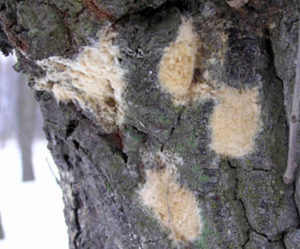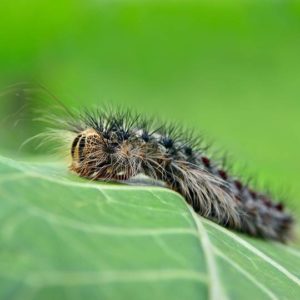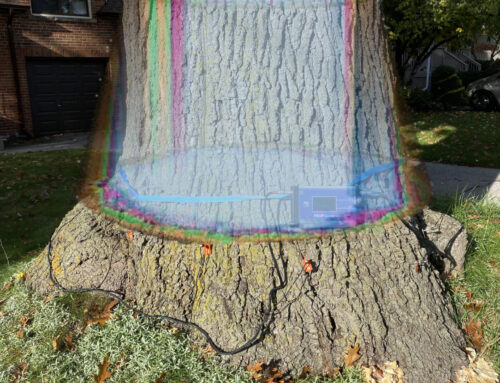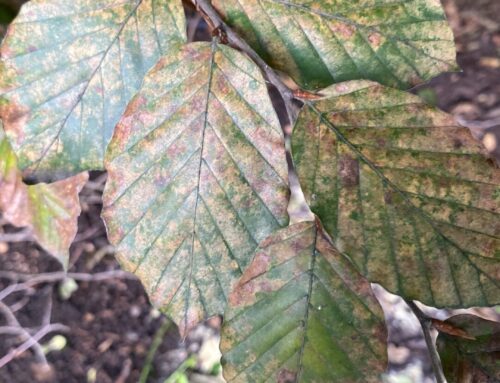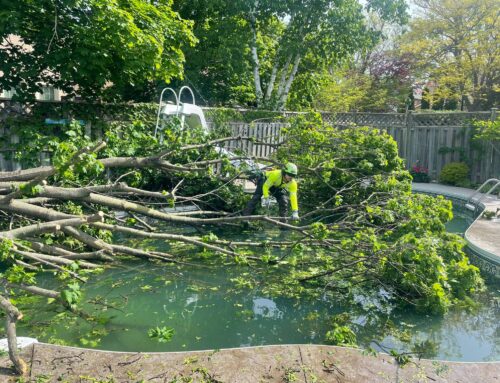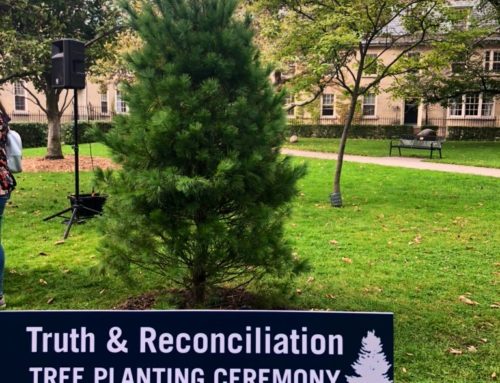Gypsy Moth, Lymantria dispar (Linnaeus) is an insect that inhabits southern Ontario and the GTA. While we will discover some inconsequential level of Gypsy Moth in our customer’s landscapes every summer, certain years we see a huge spike in the population with a potentially devastating outcome. 2017 looks like it could be a very harmful year. This spring we have observed whole neighbourhoods where trees are simply covered in egg masses! While the moth stage of the insect does not feed on trees, the caterpillar stage of this insect can potentially devour every leaf off a canopy!
(Left – Examples of Gypsy Moth egg masses. Right – Gypsy Moth Caterpillar)
In July, the adult moths (white or grey) lay their eggs in the form of a fuzzy pink-to-white oval masses of about 1.5” inches, along the branches and trunks of a host tree. A single moth can lay up to 1000 eggs! These eggs will begin to hatch in late April to late May. The caterpillar (a hairy creature with coloured spots) will emerge and move onto the foliage of the tree, feeding at night and then returning to a shady nook in the tree during the day.
This insect likes to chew on a variety of trees including: Apple, Basswood, Maples, Poplar, Elms, Beech, Pine and Spruce to name a few. Their favourite feast are Oak trees! This is of particular concern as Oaks are frequently high value heritage trees of immense significance to our landscapes and neighbourhoods.
The Gypsy Moth caterpillar can be controlled with an effective plan and proper treatments. Meet with your Cohen & Master Arborist today to determine if your trees may be under threat from this years wave of Gypsy Moth. We can offer solutions, protect your tree through this feeding period and bolster the health of your tree to ensure its success through the remainder of the summer and into future years of healthy growth.

